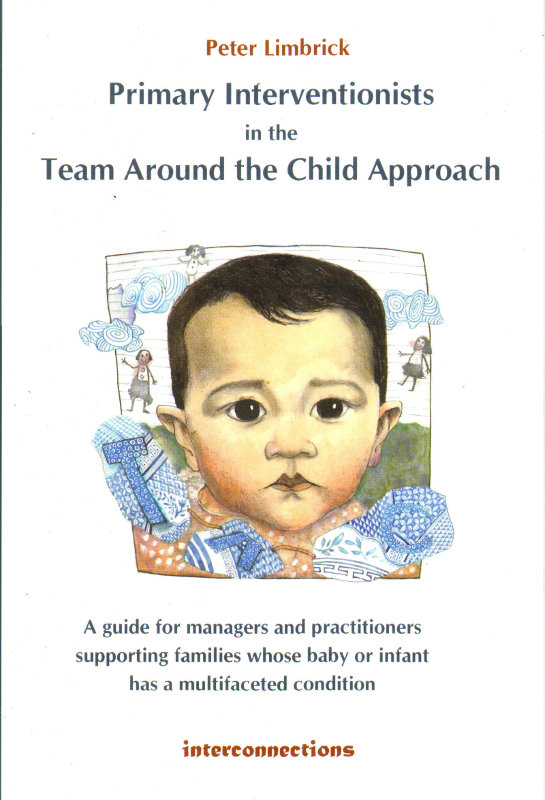Primary Interventionists in the Team Around the Child approach. Free PDF of the essay
By Peter Limbrick in 2018
Introduction
“This essay is for practitioners and managers in public, private and voluntary agencies that support families of babies and infants who have disabilities and special needs. It is also for parents, grand-parents and other family members. It argues for a modern approach to help parents help their children develop and learn.
There is a focus on children who have very special needs with two or more diagnoses of disabilities or impairments, i.e. a ‘multifaceted condition’. However, the approach is also appropriate to families whose child has less complicated needs.
This modern approach is more sensitive to babies and infants, reduces stress and strain on the family, nurtures attachment between the child and parents and takes pressure off practitioners. Problematic overload is avoided. Quality of life is protected.
In Chapter 1, I offer reasons for leaving old ideas behind and bringing support services up to date within the Team Around the Child approach (TAC) – shifting the emphasis from a medical mode to an educational mode. A key part of this is a move away from fragmented services in which multiple practitioners give a child multiple programmes. The essay shows that a single primary interventionist selected from the child’s TAC members can support parents as they help their child learn. Each primary interventionist is briefed and supported by the other members of the child’s TAC.
Chapter 2 gives stories of four representative families. The first, about Jamie, illustrates some of the stresses and anxieties parents might experience during the first months and years as they adapt to having a new child who has disabilities and special needs. It is my long experience that out-of-date support services can inadvertently add to these stresses and strains. The stories about Adam, Tuyen and Megan show how the TAC approach can, for some children and families, move towards the primary interventionist model.
Chapter 3 addresses some additional considerations in transforming traditional support into up-to-date early child and family support with TAC and, when necessary, a primary interventionist. Discussed here are interventions focusing on the child’s natural activity, TAC assessment processes and training.
The primary interventionist model is not offered as an absolute. It will benefit some families who feel overloaded with practitioners but not all. Some children and families will benefit if their TAC adopts the model in part rather than in total. Modern support systems, including TAC, must adapt flexibly to each individual child and family. We should no longer require children and families to adapt to the needs of support agencies.
Some early childhood intervention teams will see that the primary interventionist model in a modern system is not very far from their present good practice with some families.”
Free PDF of the essay:
https://tacinterconnections.com/images/PIinTACBook.pdf


